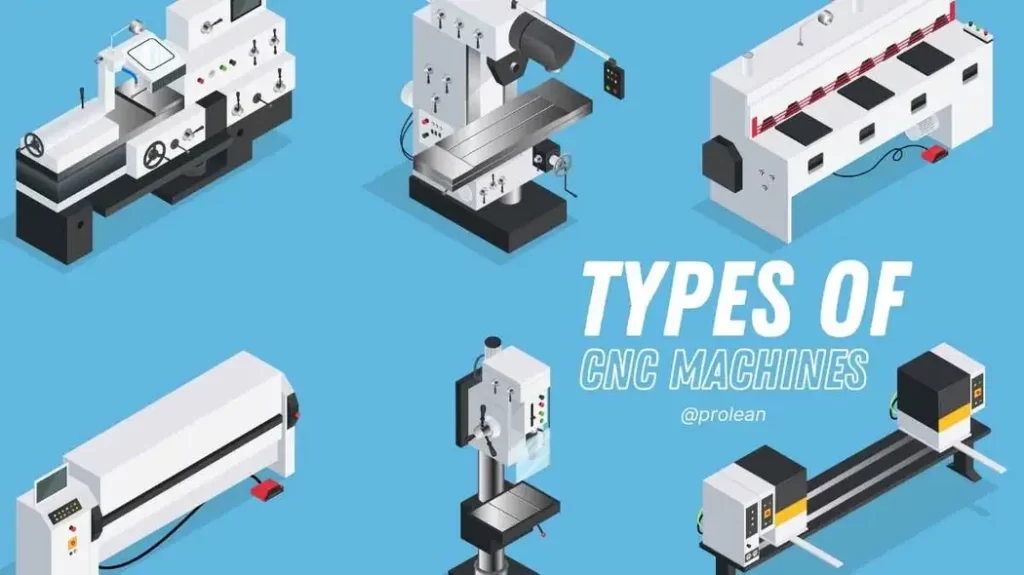
CNC machines are programmable automated tools for handling machining operations such as milling, turning, drilling, and cutting to produce precise components and parts. The (Computer Numerical Control) acronym describes CNC machines, and the accurate step-by-step procedure of cnc machining involves material removal from workpieces to produce customized products and components. This article will analyze the multiple CNC machines in line with their operational characteristics.
What Are Different Types of CNC Machines?
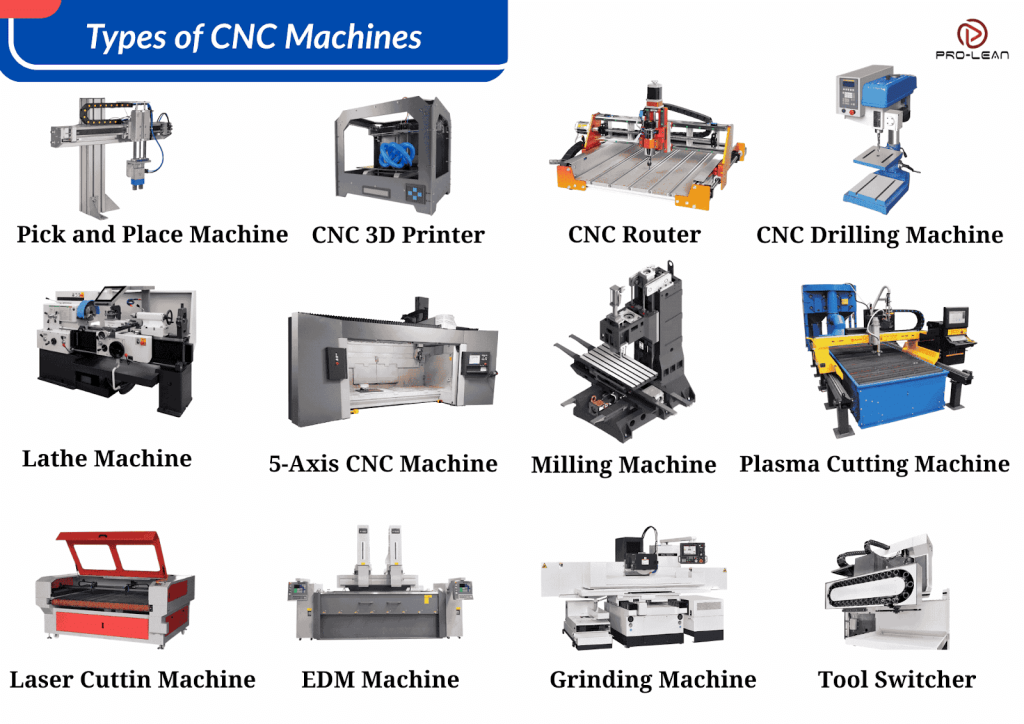
Infographic: 12 Types of CNC Machines
Here are the most commonly used types of CNC machines;
Pick and Place Machine
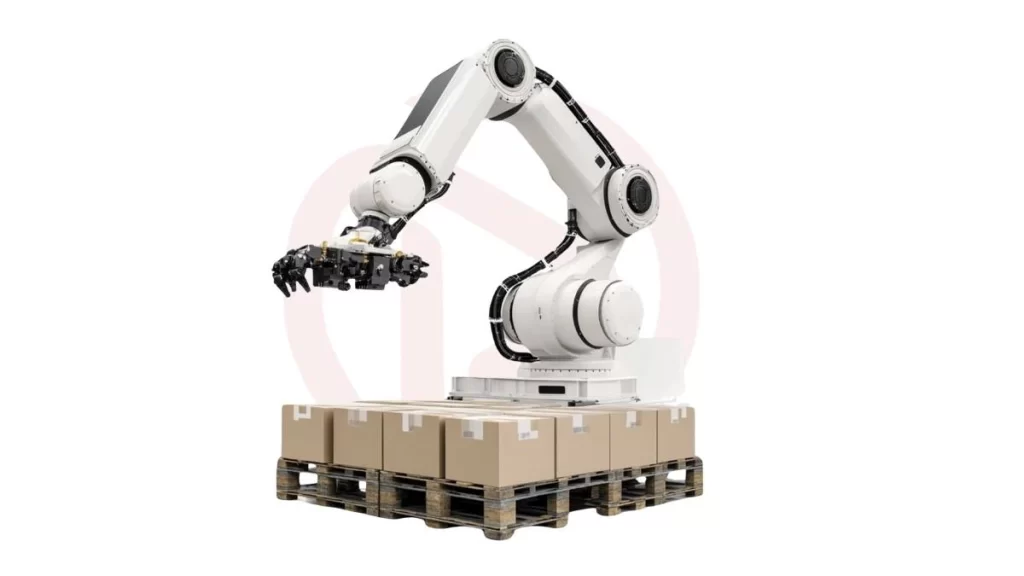
Pick and Place CNC Machine
Pick-and-place machines use nozzles to pick up components. They utilize electronic parts to settle them in precise positions. The manufacturing process of smartphones, tablets, and unique electronic products applies to these machines.
CNC 3D Printer
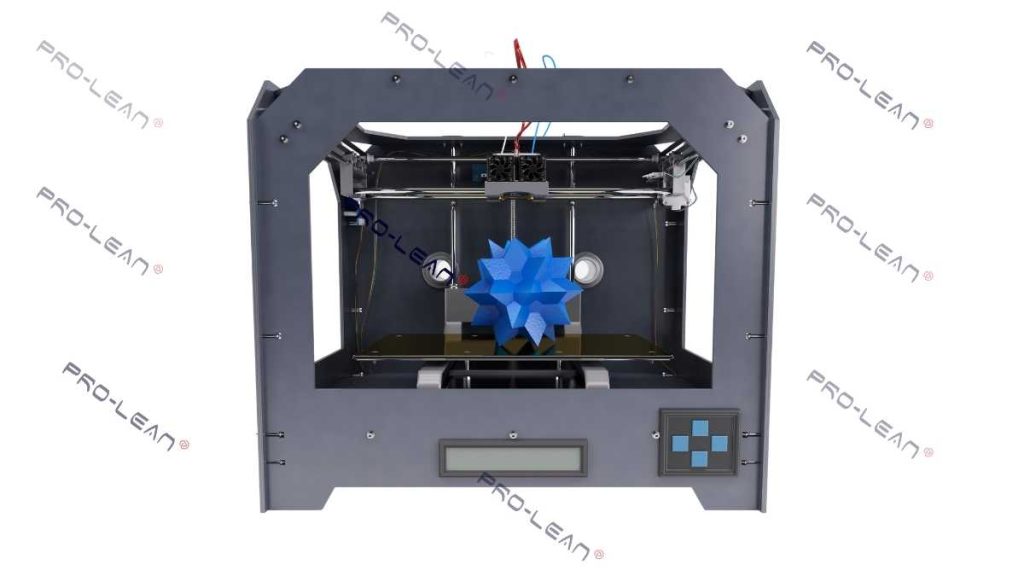
3D Printing Machine
The 3D printer belongs to the additive manufacturing devices category. In its operation, a digital design serves as the foundation for building objects by sequentially adding layers. The product design is created using CAD (Computer-Aided Design) software, while the tool paths are generated through CAM (Computer-Aided Manufacturing) software, which is then translated into CNC G code to control the CNC machine. Such printers are primarily used to create prototypes and personalized products or components.
CNC Router
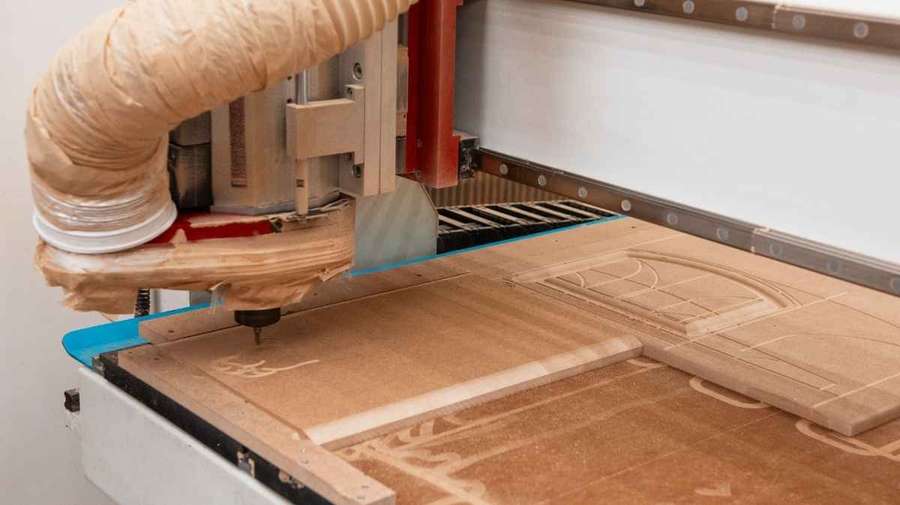
CNC Routing Machine
A CNC router operates similarly to CNC mills. It typically machines wood and plastic CNC Materials. However, it cannot achieve precision cutting to the extent that CNC mills do. As the name suggests, material shaping operations are controlled by a computer system operated by a router.
Try Prolean Now!
CNC Drilling Machine
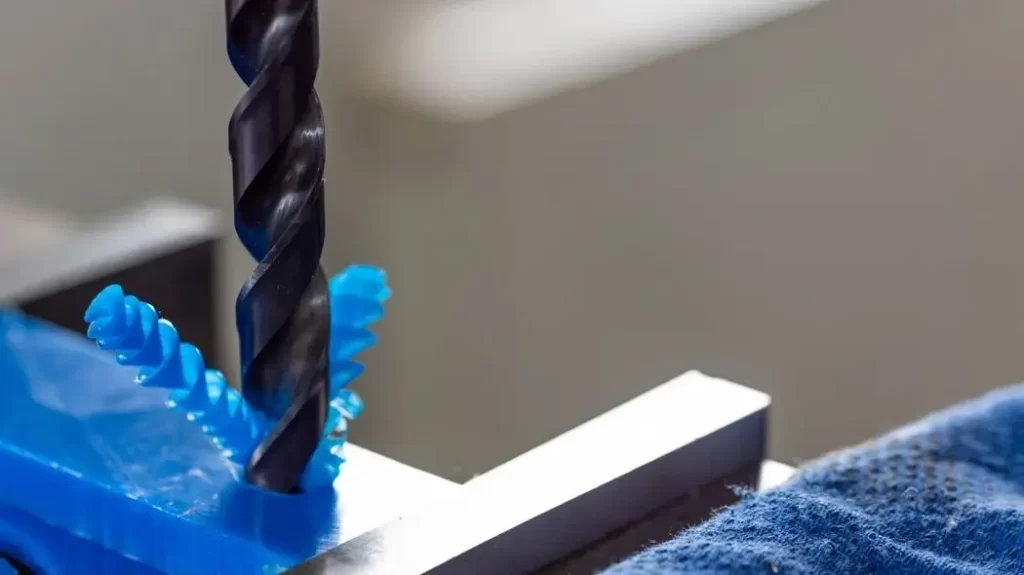
CNC Drilling Machining
The drilling operation brings shape to cylindrical holes by rotating the tool bit. This machine supports various drill bits which can be used for particular work needs. It can operate three types of drill tools: spotting drills, peck drills, and screw machine drills. The drilling process generates automatic removal of the material chips.
CNC Lathe Machine
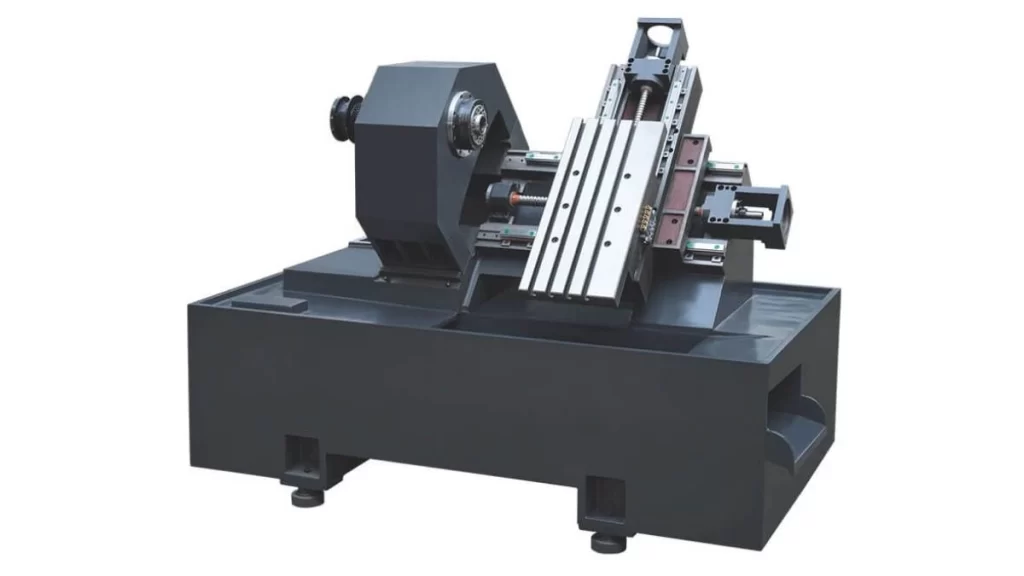
Lathe Turning Machine
The CNC lathe mechanism operates by combining spinning workpiece materials with cutting instruments. The turning tools direct their shape toward materials for rougher creation. CNC lathes are usually used for more refined shaping and threading applications. Three main types of CNC lathes exist: turret lathes, engine lathes, and special-purpose lathes. These machines allow the production of cylindrical parts with excellent results.
5-Axis CNC Machine
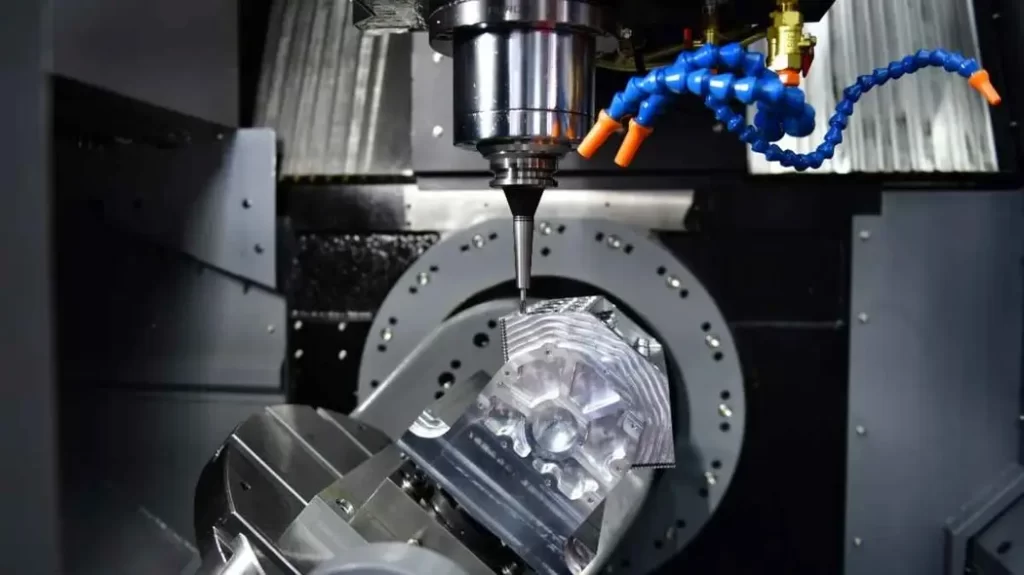
5-Axis CNC Machine
Integrating rotational multi axis machining in conventional 3-axis motion leads to 5-axis CNC machines. This machine system allows you to reach five different sides of your workpiece during one setup, and the workpiece requires fewer movements during operations. Moreover, these advanced versions allow the creation of complicated 3D shapes. (Get more insights on 3 axis vs 5 axis cnc)
CNC Milling Machine
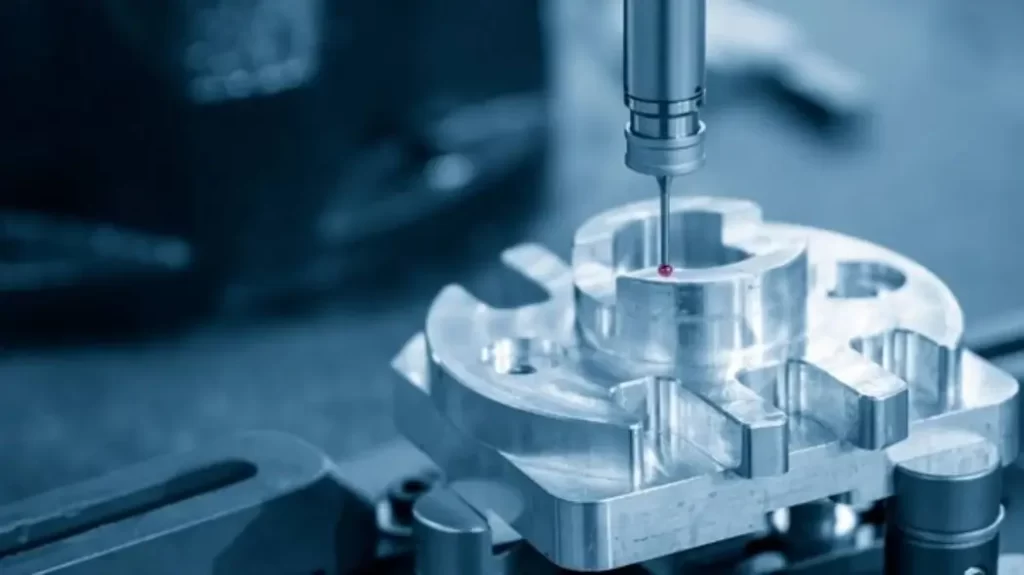
CNC Milling Machine
CNC milling machines achieve complex work material shapes. These machines operate with rotating tools and can move across three spatial axes. Milling machines encompass two configurations, including vertical and horizontal orientations. The technological device works effectively across various industrial applications.
CNC Plasma Cutting Machine
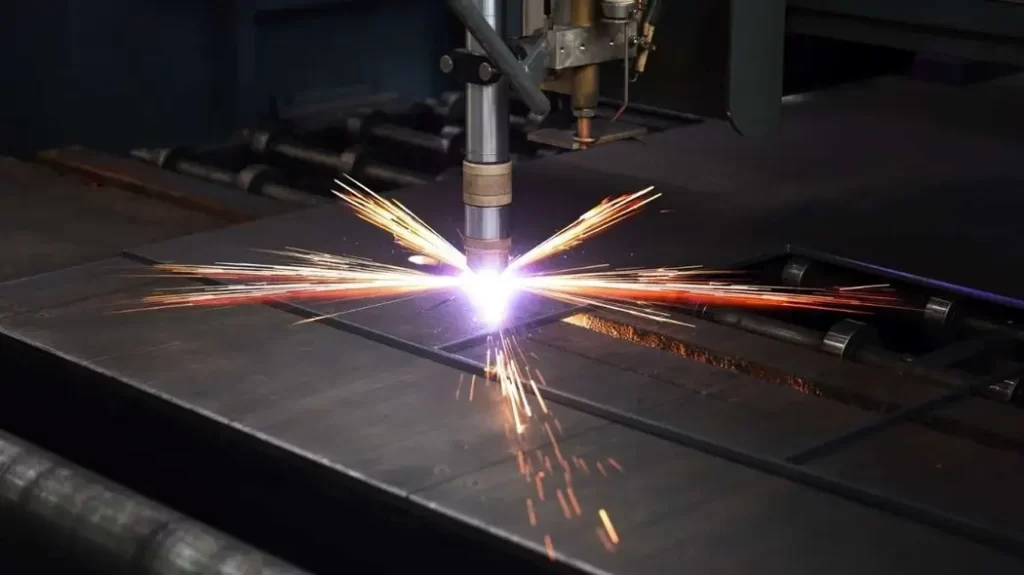
CNC Plasma Cutting Machine
The operation of CNC plasma cutting machines depends on a plasma torch, which performs the material cutting process. A plasma torch produces scorching hot plasma that allows metal cutting. These machines can effectively cut through aluminum, brass, and steel. Electrically conductive materials show the best results when these machines operate.
Try Prolean Now!
CNC Laser Cutting Machine
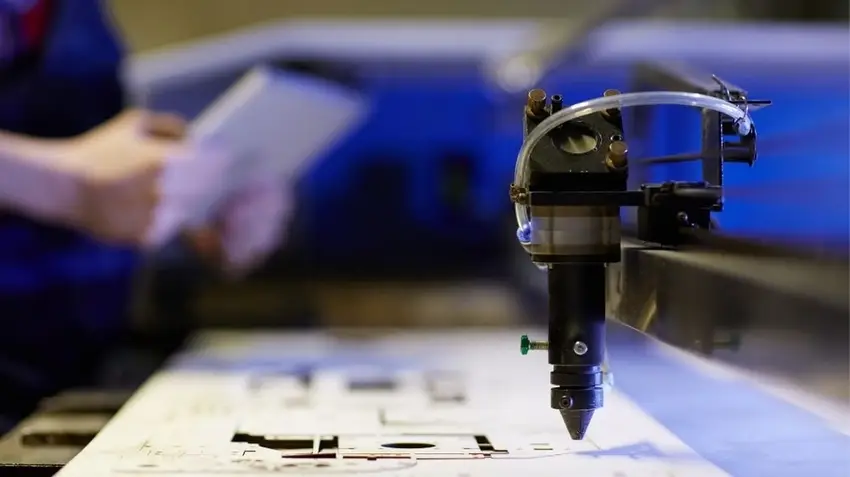
CNC Laser Cutting Machine
The CNC laser cutting machine uses focused lasers to perform material cuts. This machine operates on different materials, including metals, plastics, and wood. The cutting process between CO2 and fibre lasers separates them by their applications to non-metals and metals. The machines provide exact cuts by producing minimal waste logs.
CNC Electric Discharge Machine(EDM)
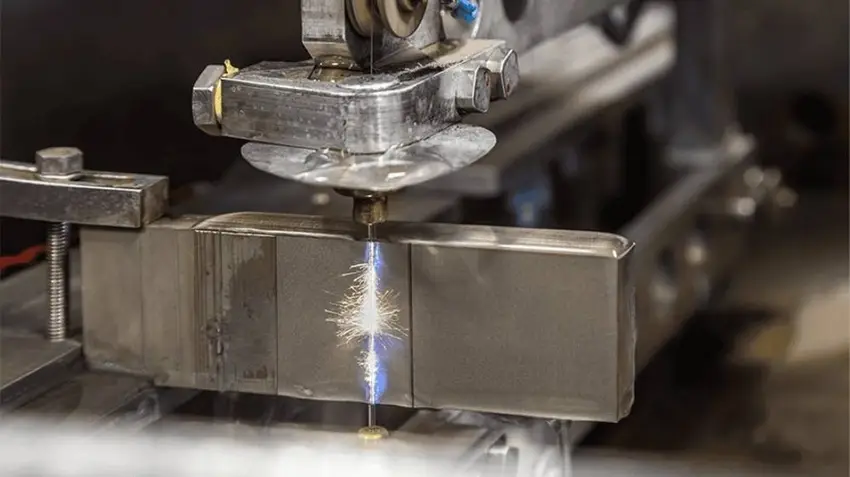
EDM Machine
Electric discharge machines operate through electrical spark generation. These machines can transform challenging metals that traditional machining operations cannot process. The electrical discharges remove material to create the targeted shape. The high precision and ability to accommodate complicated shapes make EDM an optimum choice for production that is challenging to achieve through conventional techniques.
CNC Grinding Machine
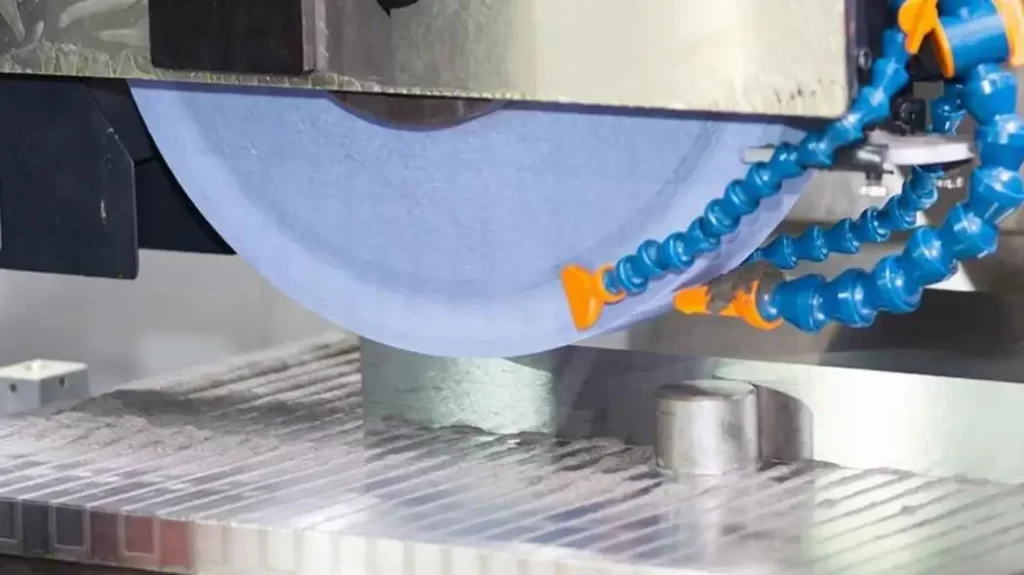
CNC Grinding Machine
The material diminution process in CNC machines happens through rotating wheels. The machines fulfil exact finishing requirements for components needing polished surfaces. The essential components primarily serve camshafts, bearings, and other parts. A CNC grinder is most effective for processing cylindrical objects.
Automatic Tool Change CNC Machine
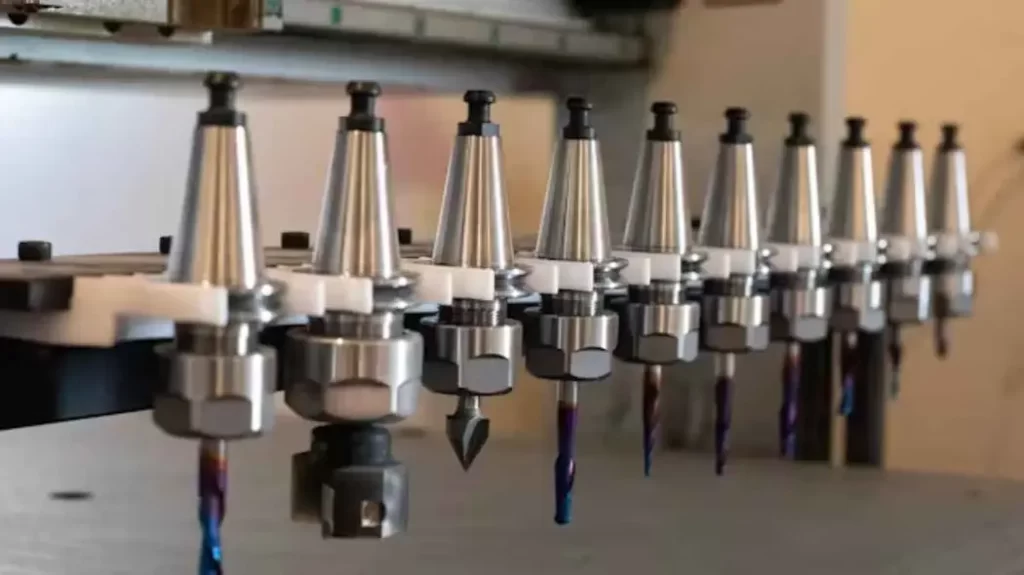
Tool Swich CNC Machine
CNC machines equipped with automatic tool changers execute efficient tool changes. This equipment’s automatic tool change feature shortens unproductive time and increases operational speeds. Through this system, machines can use various tools automatically. These machines operate best for nonstop production of bulk quantities.
Related To: How CNC Technology Transformed the Manufacturing Industry
How to Choose Between Different Type of CNC Machines?
To pick a suitable CNC machine, you need to determine your work’s manufacturing process and material types. The selection phase requires evaluating machine weight, work radius, speed, power usage, and part availability.
CNC machines can process aluminum, polymer composite, and iron cast as principal materials. Iron cast is the most suitable material for demanding duty operations, although other materials work better for less challenging workloads.
To achieve an adequate working range, choose a machine with a sufficient travel distance or workpiece to accommodate the material’s maximum dimensions. The feed rate is essential for machine operation because it dictates the speed at which the machine should cut materials.
Usually, all types of CNC machines can suffer from normal product wear because they operate as mechanical devices. Repairability and quick access to parts replacement of the selected machine brand should be easily accessible to technicians to reduce machine downtime.
Before making a purchase, verify the machine’s power requirements. Proper operation will require an upgraded power supply from your workshop.
Application Scope of CNC Machines
Table: Industrial Uses of CNC Machines
Table Description: The table below briefs how CNC machining is applied in various fields and the particular techniques and cnc parts processing or products associated with each type.
|
Industry |
Technique Used |
Parts/Products Made |
|
Aerospace |
CNC Milling with 5-axis machines |
Turbine blades, complex aerospace components |
|
Medical |
CNC Machining for Titanium and other alloys |
Titanium implants, orthopaedic prosthetics, surgical tools |
|
Automotive |
CNC Lathes and CNC Milling |
Engine blocks, pistons, crankshafts, gears |
|
Electronics |
CNC Routers |
Circuit boards, electronic housings, connectors |
Prolean Tech: Your CNC Machining Partner for Every Project
The CNC machining process seems precise and error-free, but choosing the suitable machine type depends on your requirements. The initial expense of acquiring a CNC machine presents a significant financial challenge to businesses looking to make such an investment.
That’s where Prolean Tech comes in. The company provides full-fledged cnc machining service, including basic 3-axis machines and advanced multi-axis systems for diverse projects. Our dedicated team of engineers delivers high-quality results for all complicated designs and Jobs.
So, why wait? Reach out to Prolean Tech experts to convert your CNC project ideas into practicality
FAQs:
Q1: What are the different types of CNC machines?
CNC machine types are diverse. The most common types include lathes, mills, routers, and grinders. Each machine is designed for unique tasks like turning, drilling, and shaping. Specialized CNC machines, like plasma cutters and 3D printers, are used for challenging tasks.
Q2: How does custom CNC machining improve precision?
Custom CNC machining improves precision by adjusting the machine to match the exact part geometry. The programming allows accurate measurements and tight tolerances, leading to parts with consistent quality and perfect fit every time.
Q3: What materials can CNC machining services handle?
CNC machining can process various materials, from metals like aluminum, steel, and titanium to thermoplastics and composites. When specialized tools are applied, they can also machine more complicated materials like ceramics.
Q4: What industries rely on CNC machining services?
CNC machining has a major role-play in aerospace, automotive, medical, and electronics industries. These industries rely on CNC to develop complex, high-precision parts. Moreover, it helps produce parts quickly, accurately, and consistently with minimal turnaround.

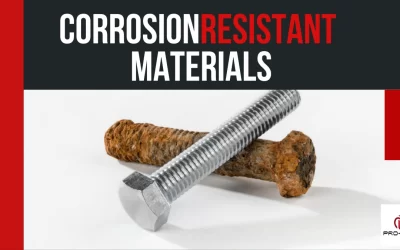

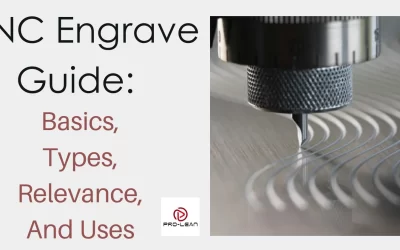
0 Comments